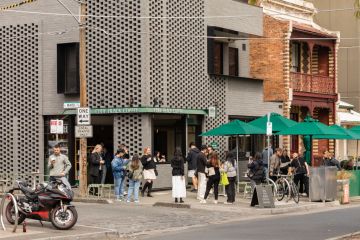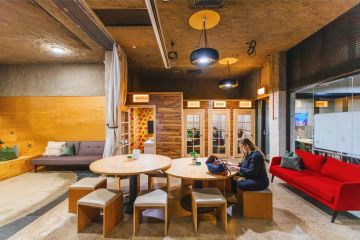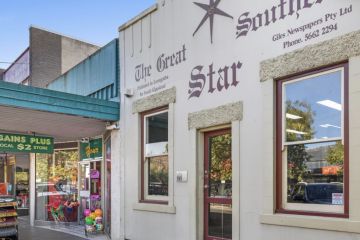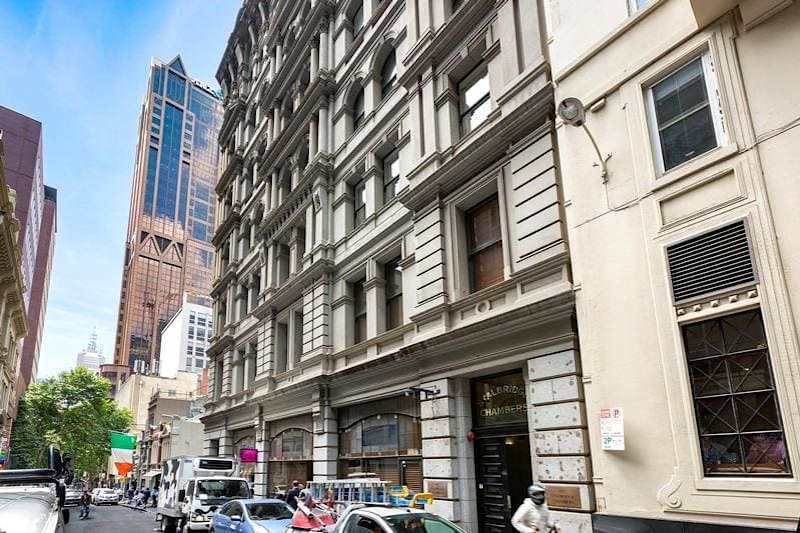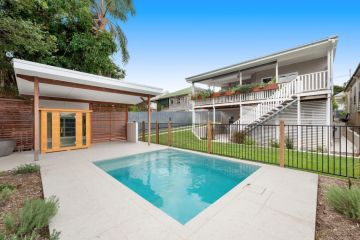Why art installations have become an expected feature in urban developments
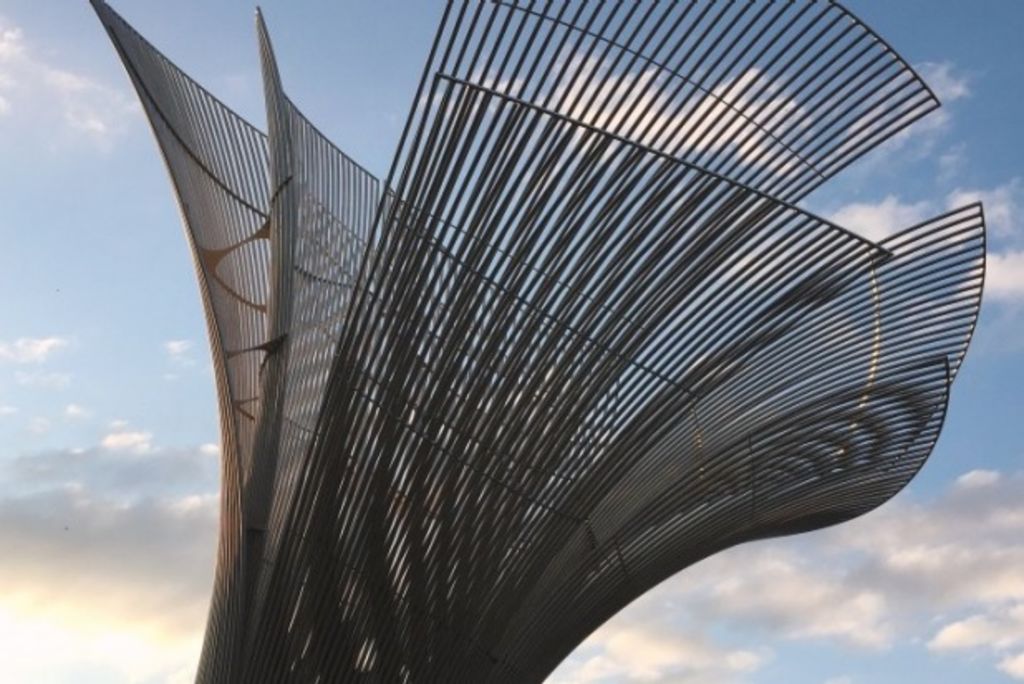
The explosion of “new genre public art” will no doubt go down in Australia’s architectural history.
Once a feature of select council-owned domains (often as part of a “public art strategy”), private property developers have embraced art installations for providing buyers with a point of difference in the crowded marketplace.
In 2015, artworks are commonplace in new housing developments almost to the point of expectancy.
ID_Land have recently commissioned a series of larger-than-life sculptures and urban artworks for its “Elements” project in Melbourne’s western suburb of Truganina.
“Purchasers of new developments expect more than just a block of land, and rightly so,” says ID_Land Director Matthew Belford.
“They are often seeking an escape from the city or nearby highly populated urban areas and want to be able to relax and enjoy the surrounds these new communities can offer.”
The first of these artworks – a Corten steel sculpture designed by Lump Sculpture Studio – is currently on display at the project’s sales office, and will be relocated to one of the development’s wetland precincts once complete.
Coburg Quarter, a new $1 billion plus urban renewal precinct developed by Future Estate and master planned by Rothelowman, is set to incorporate a series of artworks in the form of murals, street art and gallery spaces.

Growth by Matthew Harding. Commissioned by Brisbane City Council.
“By incorporating public art and other communal amenity into communities, we can start to create a unique urban identity for the neighbourhood that stretches beyond just bricks and mortar, to foster an authentic community that is living and breathing,” said Future Estate Managing Director Ben Anderson.
“When buyers search for a new home, no longer are they just looking for their four walls, but they are interested to understand how the surrounding urban fabric will enrich their lives.”
The Coburg Quarter artworks will be delivered over the next five years, with the first installation expected in 2016.
Many property commissioned artworks pay homage to their site and the culture of the area.
A new sculpture by artist Matthew Harding in FiveSquared’s “Bloom” Development pays tribute to the natural ecology of North Clyde by referencing the threatened native Billy Button flowers.
The project’s developer says the sculpture reflects “the blossoming of a new community and the community’s longstanding present and future relationship with the land”.
“The sculpture creates a sense of awareness and connection to place and serves as a symbol for responsible planning and management of both the built and natural habitat,” Harding says.
Harding believes art has become almost mandatory for residential developments in recent years.
“I feel it has become a prerequisite for developers to be shaped by and to consciously shape sustainable development,” he says.

567 by Matthew Harding. Commissioned by Leighton Properties in conjunction with Cox Architects.
The art commissioned by developer Martin Strode embraces the history of Collingwood’s Yorkshire Brewery – the site of SMA Projects’ new development.
Created in collaboration with MARS Gallery, the project features viewfinders that display images of the former Yorkshire Brewery site taken in the 1800s.
“We wanted to use artwork in the new Yorkshire Brewery community as a bridge between the past with the present,” Strode says.
The artwork is public and allows the entire Collingwood community to interact and learn about the site’s significance.
“New developments can often be a ghost town when construction has finished and residents slowly trickle in,” Strode says.
“However with the use of public art, the space is engaging for residents and the public; they will come interact with the art and the space instantly has life.”
Developer C&L International Holdings have further enhanced the community spirit of public art by collaborating with emerging local artists in their “Royal Como” project.
“Rather than simply purchasing “off the shelf” artworks, C&L’s vision for Royal Como was developed around a more community-based approach,” says Lee Gomersall, Development Manager at the Royal Como.
The Royal Como Art Commission pledges $10,000 towards an emerging Australian artist who will create and exhibit their art within the main foyer of the completed building.
Artist Andrea Eckersley. Photo: Supplied
A smaller version of the artwork by winning artist Andrea Eckersley is currently available to view at Royal Como’s display suite in South Yarra.
According to Revel Development Group Director Daniel Caspar, the increase in property art installations can be attributed to buyers becoming more educated.
“Not only is their market knowledge more sophisticated than it was 10 years ago, but their tastes have evolved,” Casper says.
“Buyers have come to expect a certain level of amenity and they can afford to be picky in a market that sees a new development launched to market every other day.”
The company’s “Reflections” development in North Melbourne features public art to foster a sense of place between residents and the wider community.
“Accessible to all, it has the power to attract positive attention and establish connections within a community,” Casper says.
“Whether used as a point of reference or meeting point, public art brings together locals and those unfamiliar with the area.”
Glenn Romanis of Romanis Trinham Collaborations Pty Ltd is an artist who specialises in public art such as sculptures and playgrounds.
“I think public art adds value [to] most communities in many ways … It can draw the community closer together through the process of relaying a story and give the broader community an educational understanding of where they live or reside which can be site specific or unique to that particular area, region or locality.”
There’s also the underlying concept of public art being a branding tool for developers, creating a conversation topic regardless of whether it is well received.
“It can give aesthetic value to a place whilst becoming a commodity for the community by drawing tourism and establishing somewhat of a cultural hub and a place of reference to meet, or just a conversational piece, whether you like the artwork or not,” Romanis says.

An artwork by Romanis Trinham. Collaborations Pty Ltd.
Indeed, many public artworks commissioned by developers and councils have been criticised but have succeeded in becoming well-known.
The announcement of a 50-metre-plus white steel cloud arch on George Street, part of a $9 million public art spending spree by the City of Sydney, caused a social media backlash when plans were revealed in 2014.
Similarly, Melbourne Gateway (better known as the “cheese sticks”) located over the Tullamarine and Flemington Road interchange and completed in 1999 continues to divide commuters.
“Of course there is such things as bad public art, it is obviously up to the individual whom is viewing the work to comment or give an opinion on whether they like or dislike the artwork or not,” Romanis says.
“Having said that, there are many other reasons in my opinion for an artwork to not be successful … whether that be through compromise with budget, location, materials, project management, coordination and underground infrastructure, or just whether the concept or technical make of the creation is unsatisfactory.”
The demand for property artworks has lead the creation of dedicated public art agencies such as Nina & Pequito and Creative Road who act as a middle-man between developers and artists.
“The property industry should be interested in public art because it plays a very important role in urban regeneration, community engagement and the aesthetic quality of the built environment, says Filitsa Giannopoulos, founder of Nina & Pequito.
Director of Creative Road, Rebecca Townsend, believes public art value adds to architecture.
“In the words of economist John Kenneth Galbraith, ‘Those communities richest in their artistic and cultural traditions are also those that are the most progressive in their economic performance and most resilient in their economic structures’,” Townsend says.
“Integrating artwork into its environment and ensuring robust materials for a long design life are two of the keys aspects of a successful public artwork.”
There’s also a practical element to public art that’s often overlooked.
“It can aid wayfinding (i.e. entrance sculptures) and can be integrated into design elements such as facades, balustrading, seating and lighting,” Townsend says.
We recommend
States
Capital Cities
Capital Cities - Rentals
Popular Areas
Allhomes
More
